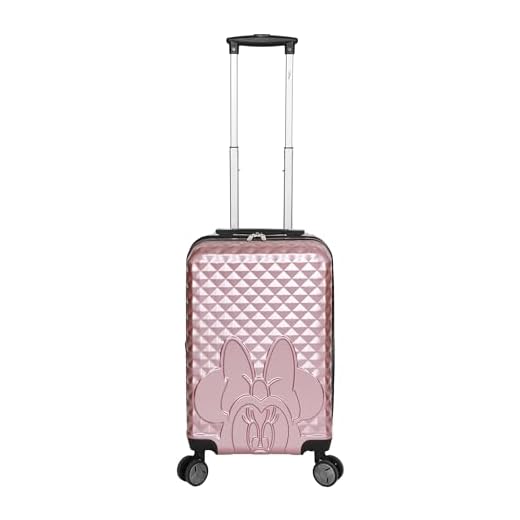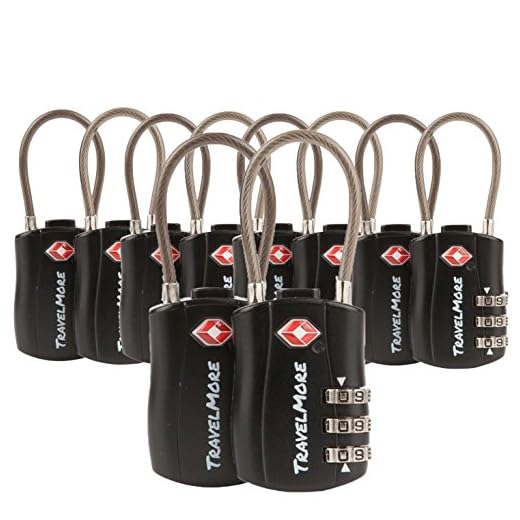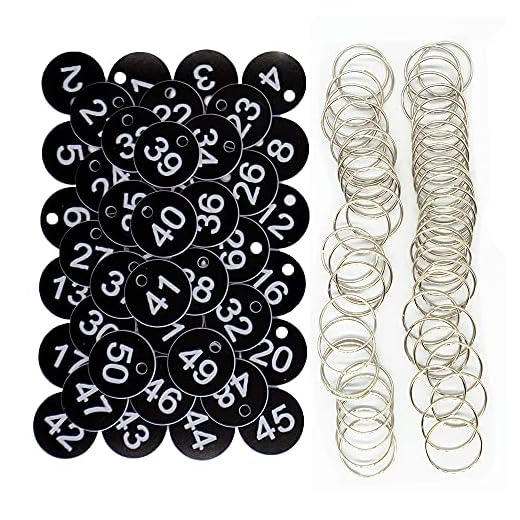





Recommendation: Rent a locker at the park entrance for day safekeeping of backpacks, carry-ons and small suitcases. Lockers rent by the day; kiosk payment accepts major cards. Typical fees range roughly $10–$15 for compact units and $12–$20 for larger cabinets. Items that exceed available locker dimensions should be routed to resort bell desk or shipped ahead via courier.
Locker specifics: Units are accessible during park operating hours and vary by size – compact models fit daypacks and totes, larger models accommodate medium roller cases. Park security rules apply to contents (no weapons, no hazardous materials). Merchandise purchased inside may be sent to a centralized pickup location at select retail points for same‑day collection near the front gate.
For on‑site resort guests, request baggage acceptance by bell services before the park visit; most resorts hold arrivals at no charge until room check‑in. Off‑site alternatives include third‑party contactless storage around the resort area with hourly and daily pricing (approx. $5–$25 depending on size and location); confirm insurance and customer reviews prior to booking.
Practical tips: measure bags before arrival and favor soft‑sided cases for better fit, keep valuables and travel documents on person, arrive early to secure a convenient locker on busy days, and use hotel baggage hold or courier options for travel days to avoid transporting large cases through the park.
Use paid entrance lockers for day-long holding of backpacks and carry-ons; overnight or oversized items require resort bell service or a courier.
Paid locker banks sit immediately past security at the park entrance and accept backpacks, daypacks and small to medium suitcases. Lockers rent by the day; electronic payment methods are accepted at most locations. Signs at the turnstiles and Guest Relations point to the exact locker area.
Practical options and step-by-step
1) Short visits: rent a front‑gate locker for a single-day hold of personal bags and bulky items. 2) Purchases: request same‑day package pickup to the front of the park at participating shops, then collect at the designated pickup window. 3) Resort guests with overnight needs: deliver bulky cases to Disney Resort bell services before heading into the park; bell service will hold items until check‑in. 4) Large or long‑term holds: arrange third‑party shipping (hotel or airport delivery) rather than relying on park facilities.
Security, prohibited items and best practices
All bags pass security screening; the park disclaims liability for lost or stolen property, so keep passports, cash and electronics on person or in a locked container. Avoid trying to fit full‑sized checked suitcases into entrance lockers–those are designed for carry‑on dimensions. Photograph bag contents and contact numbers on a luggage tag when handing items to bell or courier services.
Locker locations and rental steps for the park
Primary recommendation: use the main entrance locker bank for full-day holds and the largest compartments; opt for Discovery Island or DinoLand U.S.A. banks for quicker mid-day access near major attractions.
Main entrance lockers: immediately past security and turnstiles, on the left side of the entry plaza. Discovery Island lockers: adjacent to the Tree of Life pathway between Flame Tree Barbecue and It’s Tough to Be a Bug. DinoLand U.S.A. lockers: near the Dino-Rama/Chester & Hester’s area. Each bank typically offers small and large compartments; availability decreases during morning park opening and late afternoon.
Rental procedure (typical electronic kiosk flow): select preferred compartment size on the touchscreen; confirm the daily fee shown on the unit; complete payment via the kiosk’s listed methods; receive a printed receipt or an electronic access code/keycard – retain until retrieval. Rentals are single-day only and must be vacated before the park closes. If a bank is full, Guest Relations at the front gate can advise alternatives or temporary solutions.
| Location | Exact spot | Best for | Notes on rental |
|---|---|---|---|
| Main entrance | Just inside security, left of the turnstiles | Full-day holds; large or bulky items | Largest bank; electronic kiosk shows sizes and current rates |
| Discovery Island | Near the Tree of Life, between Flame Tree Barbecue and nearby pathways | Mid-day access when visiting central attractions | Fewer large compartments than main entrance; check kiosk for availability |
| DinoLand U.S.A. | Close to Dino-Rama/Chester & Hester’s entrance | Visitors spending time in the DinoLand area | Good for short stays in that land; small and medium sizes most common |
Locker size limits and prohibited items
Select the largest locker available for suitcases, roller bags, or multiple backpacks; typical external footprints at the parks run about 14×18×28 inches (36×46×71 cm) with internal usable space slightly smaller due to shelving and door hardware.
Common locker tiers and practical fit examples:
– Small (approx. 11×12×18 in / 28×30×46 cm): daypack, camera bag, small tote.
– Medium (approx. 14×18×18 in / 36×46×46 cm): standard airline carry-on (22×14×9 in) laid on its side, medium duffel, several shopping bags.
– Large (approx. 14×18×28 in / 36×46×71 cm): upright medium suitcase, multiple backpacks, stroller accessories.
If exact dimensions matter, measure bags and compare to the locker’s internal depth/height; rolling suitcases often require placing on their side or removing wheels to fit.
Prohibited items (will be refused, confiscated, or require removal from property):
– Weapons and related items: firearms, ammunition, knives with fixed blades or blades longer than pocket-knife size, brass knuckles, stun guns, Tasers.
– Explosives and incendiaries: fireworks, flares, smoke devices, gas canisters, camping stoves.
– Hoverboards and self-balancing electric devices that contain lithium batteries; large batteries or spare battery packs not enclosed in manufacturer cases.
– Commercial filming rigs and tripods without prior authorization; professional audio/video gear may require permits.
– Drones or remote-controlled aircraft.
– Large coolers, glass bottles and containers intended for outside alcohol or perishable food beyond personal snacks.
– Illegal substances and drug paraphernalia; marijuana is not permitted on property regardless of local laws.
– Animals other than approved service animals and medically necessary equipment not pre-cleared with park operations.
If an item falls into a gray area (e.g., specialty tools, medical devices with batteries, large photography accessories), declare it to security at entry for direction; law enforcement will handle illegal items and some prohibited items must be returned to a vehicle or disposed of offsite. For long-term safekeeping of permitted personal goods that exceed locker capacity, consider hotel bell services or offsite left-baggage providers before arriving at the gate.
Operating hours, pricing, and accepted payment for locker use
Rentals operate from park gate opening through official park closing; lockers are available only for same-day use and overnight retention is prohibited.
Operating hours
Access begins with the park’s published opening time and ends at the published closing time, including special-entry and after-hours events when those events are listed on the park schedule. If gates open at 8:00 AM and close at 9:00 PM, locker access mirrors those hours; plan return to retrieve items before the final exit. Staff assistance is available near the locker area during normal park operating hours.
Pricing and accepted payment
Typical fees range from approximately $10–$18 per day depending on compartment size: small ~ $10–$12, medium ~ $12–$15, large ~ $15–$18. Prices are charged as a one-time daily rental; there is no prorating for partial-day use and no refunds for early vacancy.
Payment methods accepted at kiosk terminals include major credit and debit cards, contactless bank cards, Apple Pay and Google Pay, and park-specific gift cards. Cash is generally not accepted at the locker kiosks; bring a card or mobile wallet. Keep the rental receipt or access code visible (photo recommended) for quick retrieval and to resolve any access issues with Cast Members.
Options for storing large suitcases: hotel bell services and nearby vendors
Prefer hotel bell service for oversized suitcases when staying overnight; most hotels hold checked bags for registered guests at no charge until checkout, provide a numbered claim ticket, and maintain limited liability (typical coverage range $500–$1,500 per item unless higher-value items declared).
- Hotel bell/concierge – what to expect
- Hours: holding generally available from lobby hours through same-day evening; extended hold beyond checkout often incurs a per-bag fee ($5–$25 per day).
- ID & receipt: an ID match and printed claim stub should be issued – request a written note of any declared value.
- Liability & insurance: ask for the property’s published baggage liability; consider separate travel insurance for high-value items.
- Tipping & handling: customary tip on delivery/pickup $2–$5 per bag; higher for heavy or awkward items.
- Packing tips: protect fragile gear in hard cases, use cable ties or tamper-evident seals, label each suitcase with contact info and room number.
- Nearby third-party providers – options and rates
- Short-term networks and local vendors (examples: Bounce, Vertoe, LuggageHero) offer per-bag rates roughly $5–$15 per 24 hours; some locations add a small reserve/processing fee.
- Independent businesses such as dry cleaners, shipping stores, and select retail shops may accept large suitcases – request maximum dimensions accepted and insured value before drop-off.
- Reserve online when possible to guarantee space and receive an electronic receipt with insurance terms; walk-ins accepted but subject to availability.
- Insurance options vary: included cover often ranges $250–$1,000; paid upgrades available for higher declared values.
- Secure alternatives for high-value or fragile items
- Hotel in-room safe or front-desk high-value safe: best for cameras, lenses, jewelry – request documented placement and retrieval procedures.
- Professional shipping (FedEx/UPS overnight or freight): economical for very large or multiple cases when timeline allows; collect at a secure pickup point to avoid unattended delivery.
- Short-term vault services at major transit hubs: priced per item or per cubic foot; suitable for extended stays or transfers.
Checklist before handing over large suitcases:
- Obtain a numbered receipt and photograph the external condition of each case.
- Confirm accepted contents (prohibited: hazardous materials, perishables, firearms unless properly declared) and maximum dimensions.
- Verify daily rates, hold limits, and insurance coverage in writing.
- Label cases clearly and secure zippers with TSA-approved locks or tamper-evident ties.
Practical packing suggestions: place small essentials in a daypack or diaper backpack such as recommended best baby bag backpack, protect electronics and optics in padded inserts, and include a compact umbrella like those listed at best customized umbrellas no minimum for sudden showers.
For photography gear intended for young nature photographers, opt for storage with clear insurance or the hotel safe; model recommendations available at best digital camera for 11 year old nature photographer.
Medical devices, strollers, and mobility aids: handling during a park visit
Keep all critical medical devices and medications with the guest; First Aid locations will refrigerate temperature-sensitive prescriptions for short periods when presented with prescription labels or a clinician’s note.
- Labeling: attach a durable tag to each item with guest name, hotel room or address, and an emergency phone number; include a photo of device serial numbers on a mobile device for recovery claims.
- Power and spares: carry one complete spare battery and the device charger; portable power banks are acceptable in bags but First Aid staff typically do not provide charging services for personal equipment.
- Attraction parking: designated wheelchair/stroller parking exists outside most ride entrances; park motorized conveyances in those zones, secure with a cable or strap, and use an identification tag–leave batteries connected only if the vendor or attendant instructs otherwise.
- Transfers and accessibility: several attractions require transfer from a mobility device to a ride seat; request transfer assistance from an Attraction Cast Member and use the marked accessible boarding points listed in the park accessibility guide on the official mobile app before arrival.
- Rentals and reservations: on-site daily rentals for manual wheelchairs and electric conveyances are available at entrance rental locations subject to availability; for multi-day needs arrange delivery from a medical-rental vendor to the resort.
- First Aid services: First Aid offers refrigeration for meds, basic wound care, and sharps disposal on request; keep prescriptions and clinician notes handy to speed assistance.
- Long-term holding and liability: Guest Relations or resort bell services accept many items for short-term holding, but personal mobility equipment is normally the guest’s responsibility; leaving powered devices unattended increases risk of damage or theft.
- Practical prep: pack a compact cable lock, clearly printed ID tags, a lightweight carrying strap for folding strollers, and a small insulated bag for critical meds; store backup documentation (prescription labels, clinician letter) in the park app or phone.
- Emergency readiness: identify nearest First Aid and Guest Relations on the park map on arrival, note accessible exits, and keep the resort phone number on device tags for rapid retrieval if recovery becomes necessary.
How to label, retrieve, and report lost items from baggage holding
Attach a durable, waterproof ID tag to every bag’s exterior handle and place a duplicate tag inside a zipped pocket; include full name, international phone number, hotel name and room (if applicable), park reservation or admission ID, drop-off date, and a short contents note (e.g., “chargers, headphones”).
Mark items with a second visible identifier such as a colored luggage strap or a bright ribbon and photograph each bag and its tag from two angles; record serial numbers for electronics and save photos and confirmation emails to the phone used for contact.
At retrieval present a government-issued photo ID that matches the name on the tag plus the original receipt, barcode email, or digital confirmation; staff will verify identity, log the release, and ask for a signature. If a locker uses an electronic code or keycard, retain the issuance receipt until completion of pickup.
For items not located at pickup, file a report with Lost & Found via the official online form or the venue’s dedicated phone line; provide a precise description (brand, model, color, size), photos, serial numbers, the approximate drop-off time and exact location, bag tag number, admission/reservation ID, and preferred contact and shipping address.
High-value items (watches, cameras, laptops) should be reported by phone immediately and a claim reference requested; expect holding periods commonly around 30 days for ordinary articles and up to 90 days for valuables before disposal or donation. Return shipping is usually offered for a fee and requires preauthorization with a credit card plus a signed release and proof of ownership.
If theft is suspected, obtain a police report and submit a copy to Lost & Found; keep all correspondence and claim numbers, check the online lost property log regularly, and follow up every 72 hours until resolution.
FAQ:
Can I store large suitcases inside Animal Kingdom for the day?
No — full-size checked suitcases are not stored inside the park. Animal Kingdom offers rented lockers near the main entrance for personal items and day packs, but those are intended for small to medium items and are rented for the day only. If you have large suitcases, the usual options are to leave them with the bell desk at your hotel (if you are staying at a resort) or use a nearby third-party luggage storage service before or after your visit.
Where are the lockers at Animal Kingdom and how do they work?
Lockers are located just outside the park entrance near the security screening area. They come in different sizes and can be rented for the day for a fee; availability and pricing can change, so check at the entrance on the day you visit. You pay at the locker kiosk and keep the access code or receipt to reopen it. Lockers are intended to be used while the park is open, so plan to remove your items before park closing. For any oversized items or longer-term needs, use hotel bell services or an off-site storage provider.
I’m staying off-site and arrive in Orlando early — what’s the best way to handle luggage before I check in if I want to spend the morning at Animal Kingdom?
If your off-site hotel offers early luggage hold, ask them to store your bags until check-in; many hotels will keep luggage for arriving guests. If that’s not available, you have several choices: (1) Rent a locker at the park for small bags and carry any essentials in a daypack; (2) Use a commercial luggage-storage service near the Disney area or at Disney Springs — services such as mobile app-based providers let you book drop-off locations by the hour or day; (3) If you plan to stay at a Disney Resort later, speak with Bell Services at that resort about holding luggage on the day of arrival (confirm their current policy and any fees). A few practical tips: bring photo ID and proof of reservation when leaving or claiming bags, remove valuables from checked luggage if using a third-party service, and verify operating hours for the storage option you choose so you can pick up your bags before travel or check-in time. If you need the most current guidance, contact Guest Relations or the hotel before your trip.







